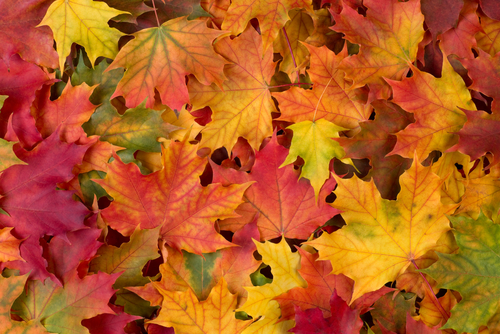What Is Peak Fall Foliage?
The changing of leaves in the fall is one of nature’s most beautiful phenomena, and those that live in areas with deciduous trees are lucky enough to experience this happening every year. However, this magnificent process in which trees prepare for winter is relatively short-lived and varies depending on weather conditions leading up to fall. When it comes to experiencing peak fall foliage up close and in person, it comes down to being in the right place at the right time.
What Is Fall Foliage?
Foliage is a term used to describe the leaves of trees and other plants. In the fall, the foliage of certain types of trees undergoes a drastic change in color before dropping from the tree. Once the leaves have been dropped from the tree, it remains free of foliage until the following spring, when days become longer and direct sunlight returns. Fall foliage is considered to be at its peak when all of the leaves have changed color but have not yet dropped.
Why Do Leaves Change Color?
Leaves allow plants to capture light energy from the sun and then transform that light into sugars that the plant needs to survive. This energy transformation relies on sunlight and the green pigment in the leaves called chlorophyll. When days become shorter, and the amount of direct sunlight available is reduced, so is the amount of energy being produced as a result of the chlorophyll.
The plant responds to this by stopping its chlorophyll production in order to conserve energy until sufficient sunlight is available again in the springtime. When chlorophyll production is stopped, leaves lose their green pigment and expose their true colors. This period is short-lived as the tree will then begin to pull all available nutrients from the leaves before dropping them and forming a protective seal where the leaf used to be.
Yellow & Orange Leaves
The yellow and orange pigments, known as carotenoids, have always been present in the leaves, but these colors were masked by the green due to all of the chlorophyll present. Once chlorophyll production is stopped, these colors become visible.

Carotenoids also capture light energy for photosynthesis but do so at different, weaker wavelengths on the light spectrum. Carotenoids also function to divert excess heat energy from the leaf during excessive sunlight. Though sunlight is necessary for a plant’s survival, there is such a thing as too much. Carotenoids play an important role in leaf function, even before they become visible.
Red Leaves
While the yellow and orange pigments in leaves are present throughout the leaf life cycle, the red pigments are not. The red pigment in leaves is actually the result of trapped sugars.
As mentioned earlier, the tree is sucking nutrients, mostly sugar, from the leaves for storage and use during the winter dormancy period. Certain types of trees are less efficient in this process and cannot capture all of the sugars. The trapped sugars produce a red pigment called anthocyanin.
Red maples, pin oaks, dogwoods, and tupelo trees are known for their vibrant red fall foliage.
How Does Weather Affect Leaf Color?
The weather conditions leading up to and during fall can affect the degree to which foliage changes color. Dry, sunny, and cool conditions will lead to the most vibrant, drastic changes in color, while foliage in damp, cloudy, and warm climates will produce more muted tones.
When Is The Best Time To See The Peak Fall Foliage?
The exact time of year that trees will transition through fall foliage cannot be determined precisely, but with enough supplemental information, experts can provide a pretty decent estimate. The Farmer’s Almanac and American Forests Organization provide interactive maps and historical representations of fall foliage changes across the country as a resource for those planning an autumn sightseeing trip. For the most detailed information, you should check out these sites directly. Keep reading for an idea of where to start for fall foliage trip planning.
When To See Fall Foliage
Owning an RV can give you a leg up in the race to witness peak fall foliage. If you’re a full-timer, you may even be able to follow the peak fall foliage starting up in the north and working your way south starting in September. Keep reading for more information on where to be and when this fall.
Weather conditions not only affect the degree to which leaves change color in the fall but also affect when this process begins and for how long it lasts. Northern regions will see changes in fall foliage earlier in the year than southern regions because of the differences in seasonal temperatures.

Mountain West
The Mountain West, which includes states such as Colorado, Idaho, and Montana, typically experiences dry and hot summer conditions, which prepare the leaves nicely for the switch to fall foliage. You can expect foliage in this area to be reaching peak color levels around mid-September.
Northeast
With a greater latitude and the nearby Atlantic Ocean, states in the Northeast remain a bit cooler during the summer months but are less affected by drought conditions. Typically, foliage in the Northeast reaches its peak around late September to early October.
Upper Midwest

Similar to some of the Northeast region in latitude and with large bodies of water surrounding the area, the Upper Midwest experiences peak foliage around the same time of year, in early October. Traveling up a bit to the upper peninsula of Michigan or northern Minnesota will get you more intense color changes than those happening in the central midwest states.
Pacific Northwest
Forests in the pacific northwest have been stressed by high temperatures and forest fires in years past but experienced more stable conditions recently that may still result in an “average” fall showing. Keep in mind that this average is based on a pretty high bar, so expect some vibrant colors around early October this year.
Southeast
With hot summer temperatures averaging in the upper 70s to 80s, the southeast is typically the last region in the US to undergo the transition of fall foliage. Expect bright colors, but be patient because you can expect this to occur mid to late October.
Where in the US is the best place to experience fall leaves? Are you going to be taking any fall foliage sight-seeing trips this year? Let us know in the comments below!
Recent Posts
-
Can You Put Regular Furniture in an RV?
Many new and old RV owners ask themselves this question when they feel the need to update th …Apr 25th 2024 -
4 Tips for Securing RV Furniture While Traveling | RecPro
How To Secure RV Furniture There are few things that beat going out on an adventure with an RV …Apr 25th 2024 -
How To Keep RV Furniture From Peeling
Peeling RV Furniture | Why it Peels and How to Stop it Your RV furniture is a point of pride on yo …Apr 25th 2024 -
Turning up the Heat With an RV Fireplace
There’s an unlimited number of cool and exciting features you could add to your recreational vehicle …Apr 25th 2024 -
How To Install An RV Fireplace
A Warm Addition to Your On-Wheels: The DIY RV Fireplace Installation Guide Many RV enthusiasts ask …Apr 25th 2024 -
Are RV Electric Fireplaces Safe
Being Safe in Your RV with an Electric Fireplace Safety is always going to be one of your highest …Apr 25th 2024







